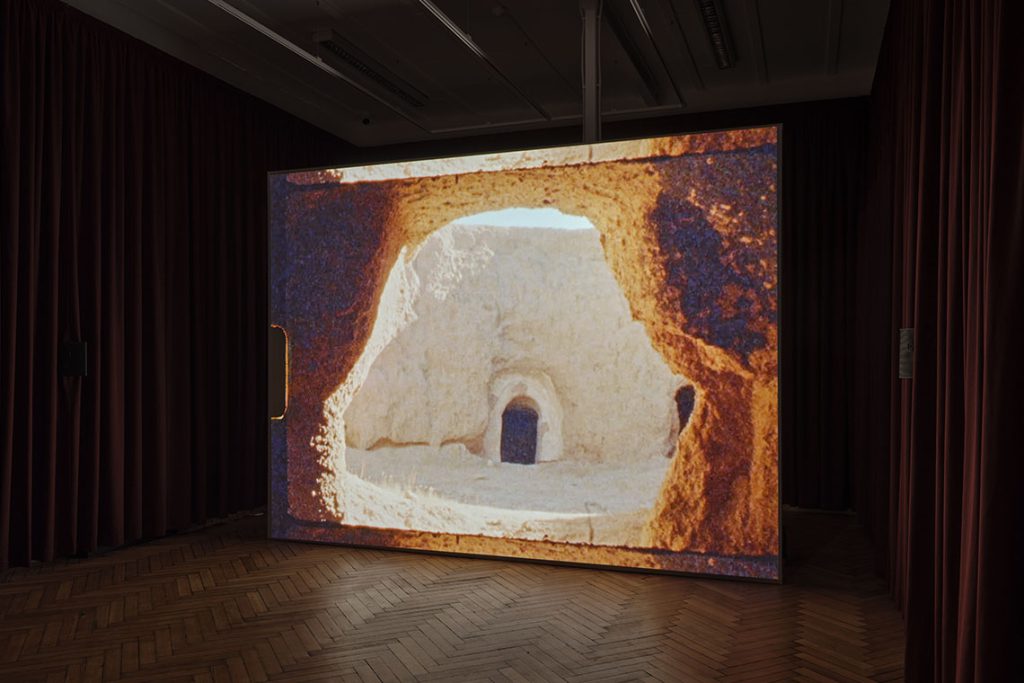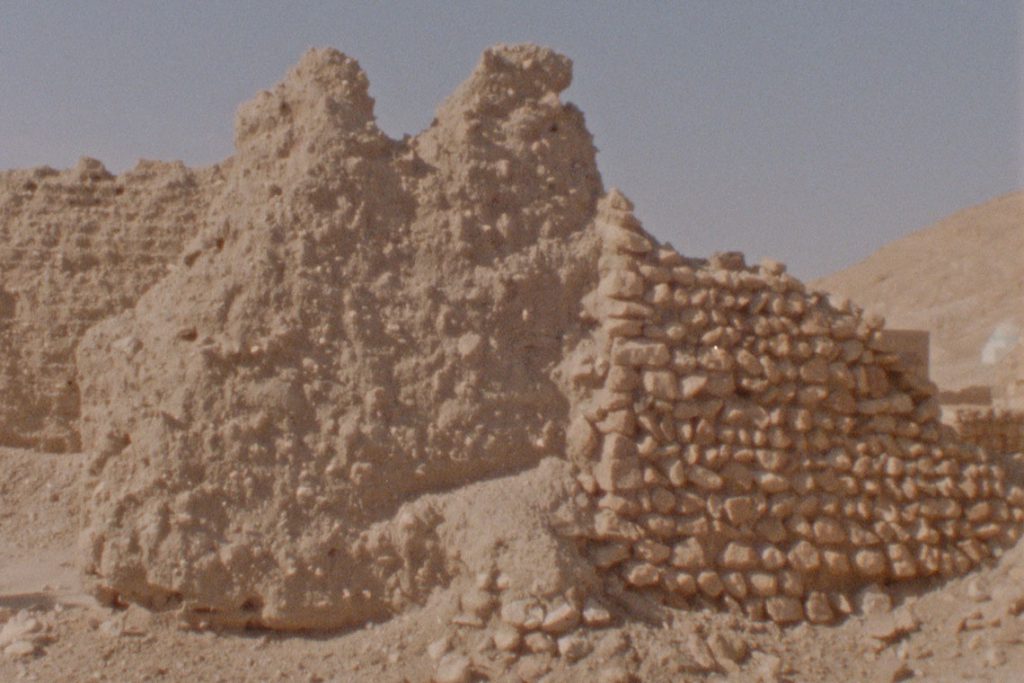London’s Zaha Hadid Foundation hosts the exhibition Images de Tunisie, an exploration by Younès Ben Slimane of elusive histories and ever-pressing realities.
The trio of films by Tunisian artist Younès Ben Slimane showing at the Zaha Hadid Foundation in London delivers many sensual moments, but perhaps the most satisfying is the squelch of clay being moulded into handmade bricks. It is a kind of slap-slurp, the sound of history repeating itself.
Ben Slimane’s exhibition, Images de Tunisie, comprises three films of varying tones and techniques, shot over the past six years. For audiences, the result is half an hour spent immersed in the atmosphere of the country’s vernacular architecture – swirling dust, steam, eerie light changes, the hiss and crackle of palm fronds going into fire.
Ben Slimane, who trained and practiced as an architect before turning to film, focuses on Tunisia’s inferno-like kilns and sweltering bathhouses, as well as its wind-blown ruined villages littered with fragments of pottery and the crumbled facades of houses. He conjures up a built environment informed by both change and continuity.

“In a place, two realities exist in close proximity,” he notes. “There are the physical, tangible things, and also the intangible elements of the senses. It’s this duality that drives me to explore the ways in which places operate.” The result is a cinematic search for the mood of rooms and the essence of alleyways.
The trio of films presented in London opens with All Come from Dust (2019), which centres on the huge kilns of Tozeur – buildings made of bricks, in which bricks are made. It is here, where Ben Slimane’s ancestors lived and worked, that traditional crafts are being kept alive. We see the bricks being created out of clay and sandy soil, with each dollop pressed into octagonal and rectangular wooden moulds. Impressive production values allow for dramatic compositions of smoking monumental chimneys and half-lit storerooms punctuated with discarded pots. We hear the desert winds howl and the intimate scrape of hands in earth.
Parallel (2018), the short centrepiece of the whole show, is a five-minute static shot of the interior of a hammam in Hammamet, the coastal town in northeast Tunisia. It is a portrait of steam and sunlight, in which only an occasional suggestion of a bather’s body – little more than amorphous blurs – come and go in the creamy-white haze. Sound becomes the focus: talking, laughter, the splash of water, the resting of jugs on tiles. In the context of the exhibition, bookended by two films characterised by the earthy hues of brickmaking, the work acts as an effective palette cleanser.

The trio of films closes with Images de Tunisie (2024), a new piece commissioned by the foundation and from which the overall exhibition takes its name. “The film’s title is adopted from Georges Barrois’s ethnographic documentary Images de Tunisie (1946), which interested me for its ability to create images and shape narratives,” explains Ben Slimane. “I reappropriated extracts from it, as well as from other historic documentaries produced by Les Actualités Françaises, by manipulating the voiceovers of the scenes. Last year, I returned to the sites featured in these films to recapture the scenes from my personal vantage point.”
The historical newsreel footage, sourced from France’s National Audiovisual Institute (INA), includes shots of artisans using traditional methods of brickmaking. It is combined with contemporary steady-cam footage taken on walks that Ben Slimane took through the same areas, sites such as the troglodyte homes of Matmata, and the Berber villages of Douiret and Tameghza, environments degraded by the passage of time.
The film layers and alters historic depictions of Tunisian architecture while adding new footage and sound, says Johan Deurell, who has curated the exhibition for Zaha Hadid Foundation. “Images de Tunisie is a commentary on the evolution of cinematic language, shifting power dynamics and the meaning of images,” he explains.

Although it looks back to the 1940s, the commissioned piece is not a didactic comment on the years of French rule, says Deurell, who describes Slimane’s approach as “post-post-colonial”. Here, the theme of colonialism is subtly alluded to, rather than openly critiqued. The use of archival imagery is adopted as a valuable record of the architecture, while the original narration – delivered in the service of the French empire – fades out, erased by Ben Slimane as if that contextual framing is simply no longer relevant.
This is the artist’s first solo show in the UK and it marks the beginning of a new exhibition programme at the foundation that was created by the late Iraqi-British architect. Images de Tunisie is a worthy inaugural presentation for the venture: Ben Slimane has produced three well-honed impressionistic chapters in a story about the spaces formed from toil and time.



